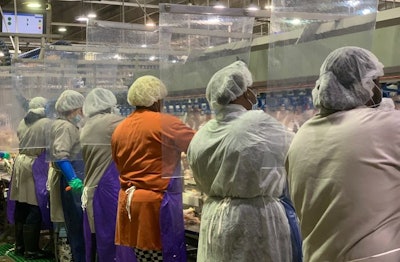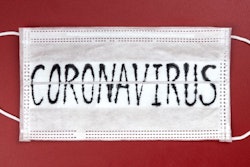
While the meat and poultry industry has taken a number of measures to protect its workers during the COVID-19 outbreak, more needs to be done, said Maximo Torero Cullen, assistant director-general and chief economist for the Food and Agriculture Organization (FAO) of the United Nations.
Cullen shared his thoughts on May 27 during the webinar, “From Containment to Consequences of COVID-19 in the Food and Agriculture Sectors.” The webinar was hosted by the International Poultry Council.
Cullen -- who is also a professor on leave at the University of Pacific, Peru -- noted that most processing plants are “labor-intensive” and were not laid out with a workflow that is conducive to social distancing guidelines. He showed a photo of a Tyson Foods plant where line workers were separated by plastic dividers, indicating that it is an improvement, but adding, “honestly, this doesn’t seem enough.”
“A change needs to go deeper than where we are observing today, if we want to keep operating,” said Cullen.
“These packing plants, where you have thousands of people working one next to another, that cannot continue, and that will require some engineering and some thinking.”
One possible change would be increased automation. However, he calls a move to automation “risky,” because it would mean fewer job opportunities for people.
Wet markets
Cullen was asked what could be done to improve food safety standards in wet markets where poultry is sold.
While he stressed that there was no scientific evidence that wet markets have been a source of the COVID-19 pandemic, he did indicate food safety improvements at wet markets could be coming. Cullen spoke of an agreement between the FAO, the World Organisation for Animal Health (OIE) and the World Health Organization (WHO), to “carefully” look at the issue, “and that means increasing the standards of food safety in all wet markets.”
“If they cannot find a way to do it, then we need to take more drastic solutions. But I think that it’s really important that food safety is assured across the board in a scientific basis,” he said.
View our continuing coverage of the coronavirus/COVID-19 pandemic.

















